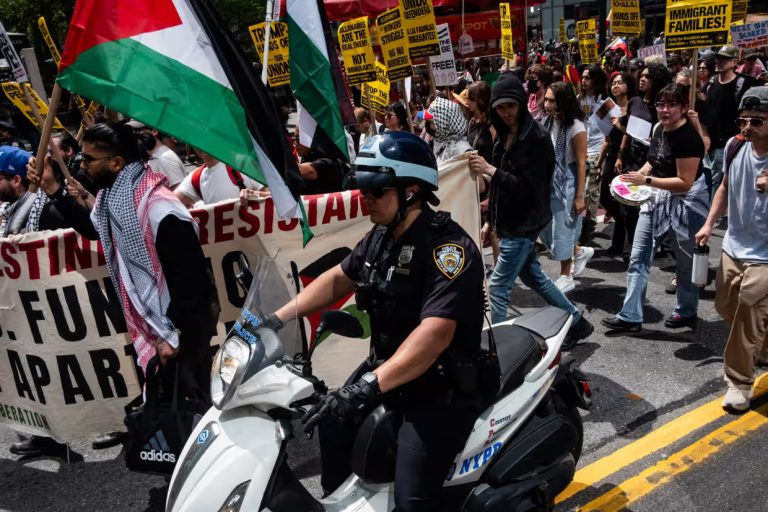Protesters took to the streets across the United States on Thursday, advocating for workers’ and immigrants’ rights in the latest wave of protests against Donald Trump and his administration.
Observed as International Workers’ Day, May Day followed two major days of protests in April — the April 5th “Hands Off” rallies and the April 19th Day of Action — which brought millions into the streets nationwide.
Organized by hundreds of groups, the May 1st demonstrations were scheduled in nearly 1,000 cities, focusing on opposition to the Trump administration and “billionaire profiteers.” While turnout was expected to be lower than the previous April protests due to May 1st falling on a weekday, tens of thousands of people were still anticipated to participate. Major rallies were held in cities across the country, from New York to Seattle and even Anchorage, Alaska.
“This is an assault on working people – and we will not back down,” reads a statement on the national day of action website. “They’re cutting funding for our schools, privatizing public services, attacking unions, and using fear and violence against immigrant families. Working people built this country, and we know how to support one another. We will not retreat – we will keep fighting for our families and for the rights and freedoms that create opportunities and a better life for all Americans. Their time is over.”
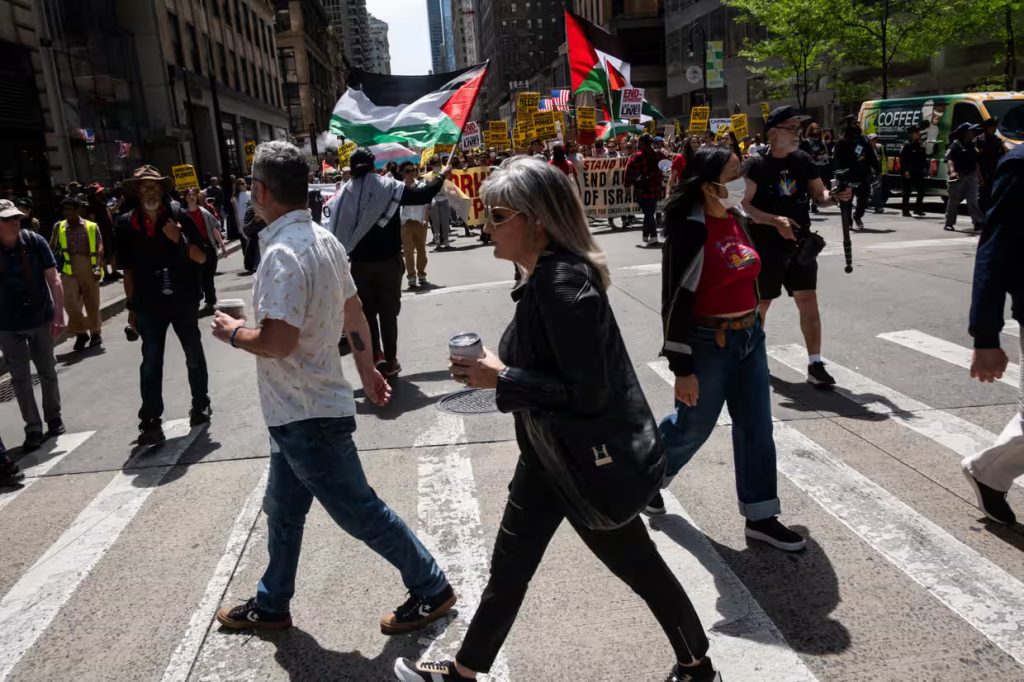
A map of May Day protests revealed that several major metropolitan areas had multiple rallies planned. In Los Angeles, a coalition of groups began the day with an early morning rally, followed by a program and march to show solidarity with the city’s workers and immigrants. In New York, protests were organized throughout the day, with participants rallying in support of workers, immigrants, and others targeted by the Trump administration. Some protesters at the New York rally also voiced opposition to Columbia University’s compliance with Trump’s demands.
“We saw a lot of new faces today, people who are getting energized and ready to act. The Trump administration is clearly targeting the rights we’ve fought for, and we’re all stepping up to fight back,” said Saidi Moseley, 25, an education coordinator and one of the organizers of the May Day march in Union Square.
Betsy Waters, a 67-year-old retiree who volunteers full-time, held a sign reading “due process for all.” She said she had attended several marches and felt it was crucial to show up. “We have to be out here, standing up as much as we can,” Waters explained. “What’s happening in our country right now is just not right, and I’m here to make that stand.”
Lydia Howrilka, a 25-year-old librarian from Queens, carried a sign that read “only you can stop fascism.” “I’m here in solidarity with my immigrant brothers and sisters in New York,” Howrilka said. “I’m here to defend democracy.”
Grant Miner, one of the speakers at the New York rally, was expelled by Columbia University in March after participating in pro-Palestinian protests.
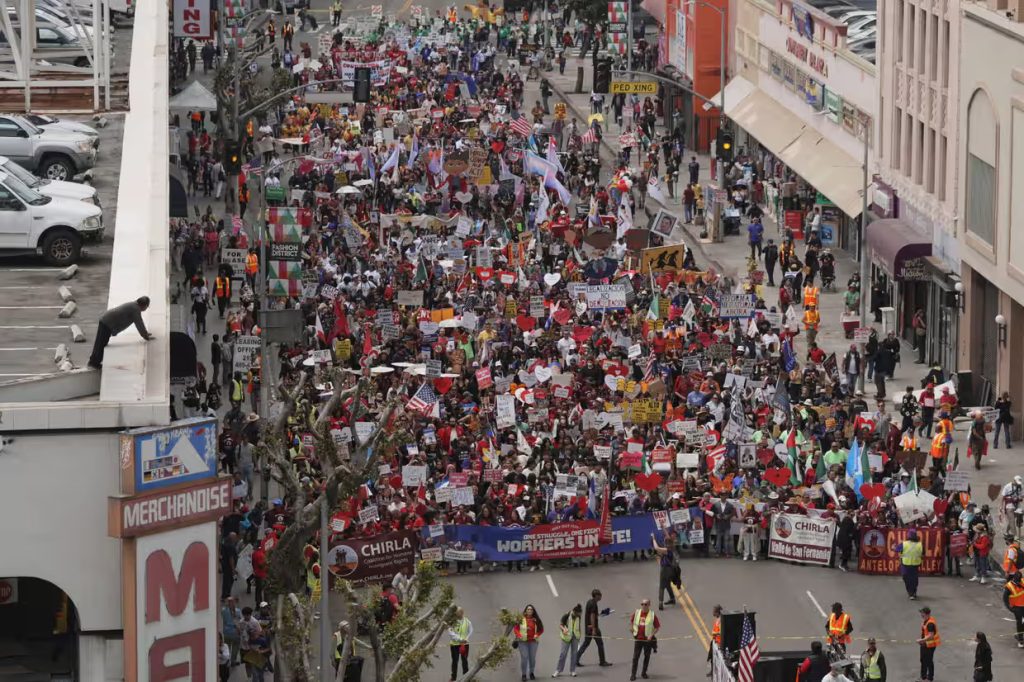
“I’m speaking out about issues that are directly affecting my fellow workers, like the ongoing cuts to higher education and the targeting of students involved in protests. These are two major challenges we’re facing in our workplace,” said Grant Miner, president of UAW 2710, the Student Workers of Columbia union.
As Donald Trump marked over 100 days in office — a period defined by drastic cuts to the federal government and attacks on democratic norms — a resistance movement has emerged, steadily growing since February. More and more people have come together to push Democrats to take a stronger stand against the Trump administration.
Trump’s approval ratings have shifted from positive to negative, with disapproval now outweighing approval. The focus on workers and immigrants comes at a time when Trump has dismissed a significant number of federal workers and his administration has escalated deportations, including targeting individuals whom courts have ruled should not be deported.
“Everyone deserves respect and dignity, no matter who they are, where they were born, or what language they speak,” reads the May Day protest website. “Immigrants are workers, and workers are immigrants. Our fight for fair wages, safe workplaces, and dignity on the job is the same fight for immigrant justice.”
The organizers of the May Day protest in Washington, DC, estimated that up to 3,000 people would join the rally in the nation’s capital, demanding job safety, legal protections, and an end to unjust deportations.
“We’re seeing people abducted off the streets every day in some of the most violent and inhumane ways. People like Kilmar Ábrego García are just one example — and his story is far from unique,” said Cathryn Jackson, public policy director at Casa, an organization that provides vital services to immigrant and working-class families.
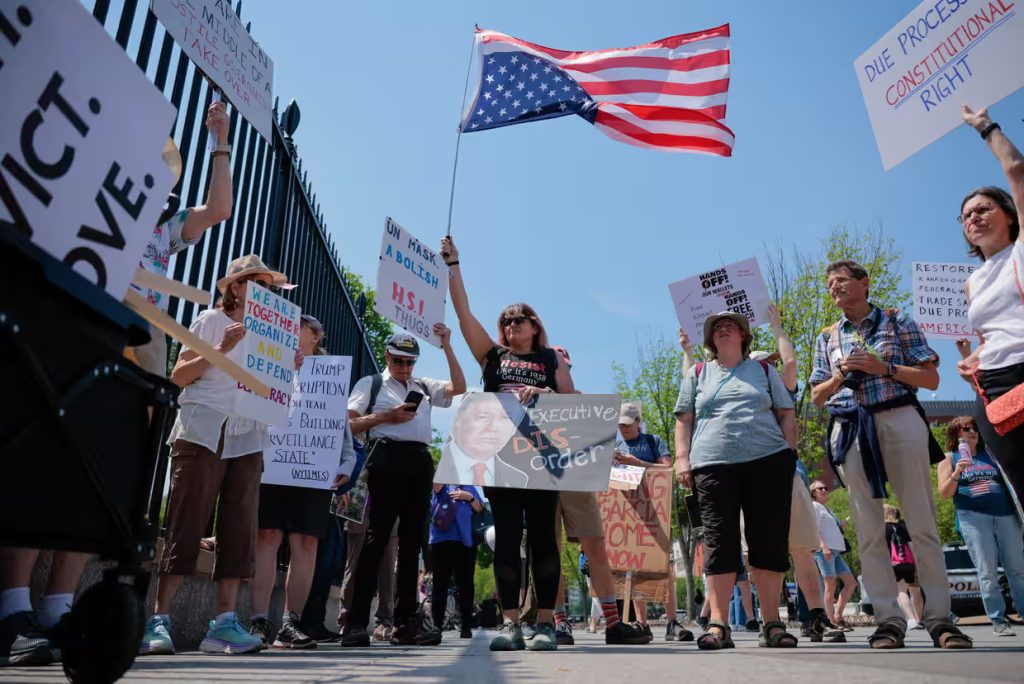
Jennifer Vasquez Sura, the wife of Ábrego García, was expected to speak at Thursday’s rally as she continues to fight for her husband’s release from a prison in El Salvador and his return to the US.
“Hundreds and hundreds of people are being deported to some of the most dangerous prisons across the country with no due process,” said Cathryn Jackson. “This rally is about solidarity. It’s about showing that no matter what the Trump administration tries to do, we are committed to fighting back.”
Among the speakers scheduled for the Washington rally was María del Carmen Castellón, whose husband, Miguel Luna, tragically died in the Key Bridge collapse in Baltimore last year.
Jackson described the story of Luna and the five other construction workers who lost their lives in the incident as “symbolic.” All six men were construction workers from Latin American countries.
“This is the story of men working through the night while the rest of us were asleep, building the roads and doing the work that many people don’t want to do,” Jackson continued. “We are literally building this country with our hands, and yet we’re treated like this in return.”
Delia Ramirez, a Democratic representative from Illinois, also spoke to the crowd in Franklin Park, proudly identifying herself as the “daughter of Guatemalan immigrants.”
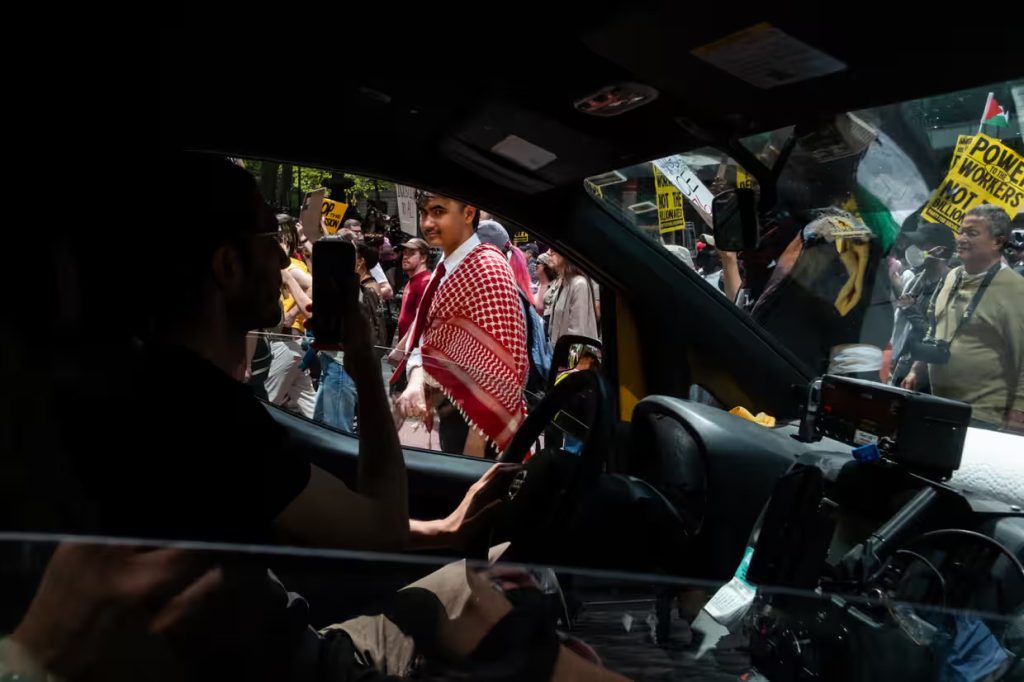
“Today, on International Workers’ Day, we stand united,” Ramirez declared. “We’re united because we know this president wants to silence us. He wants to divide us and set us against one another. But we will not be silenced.”
She continued by saying that the Trump administration understands “the only way to stop fascism is through mobilization,” acknowledging that tough days lie ahead. “But as long as you keep organizing, I will help amplify that voice and continue to stand against fascism.”
Jorge Mújica, the strategic organizer for Arise Chicago and a key figure behind the city’s May Day protest, told Democracy Now that “the Trump administration completely miscalculated” by targeting so many different groups in its first 100 days.
“They are attacking everyone at once, and that’s allowed us to build a broad coalition — with labor unions, federal workers, students, university professors, and many other communities — to organize this event on May Day,” Mújica explained.

